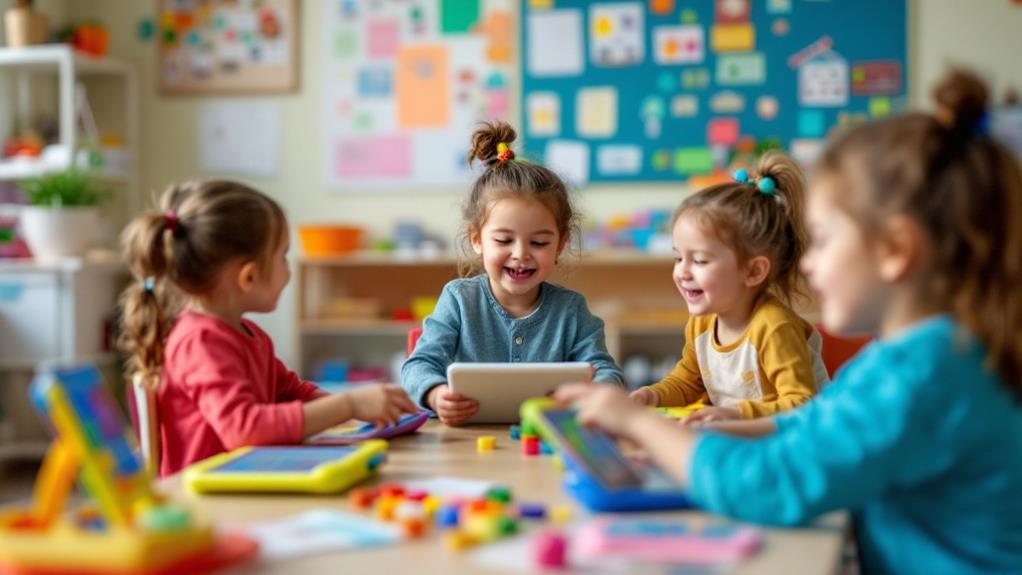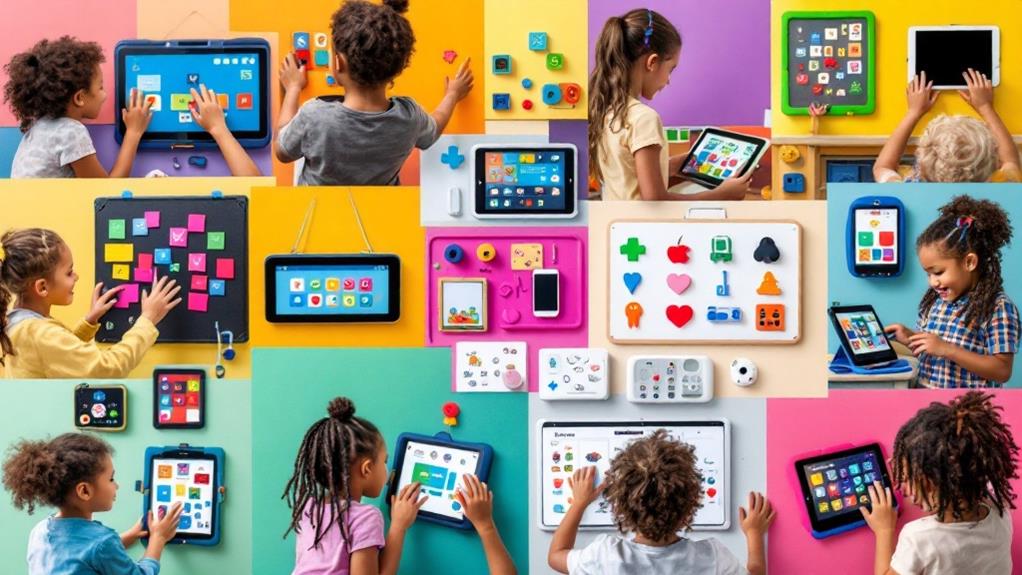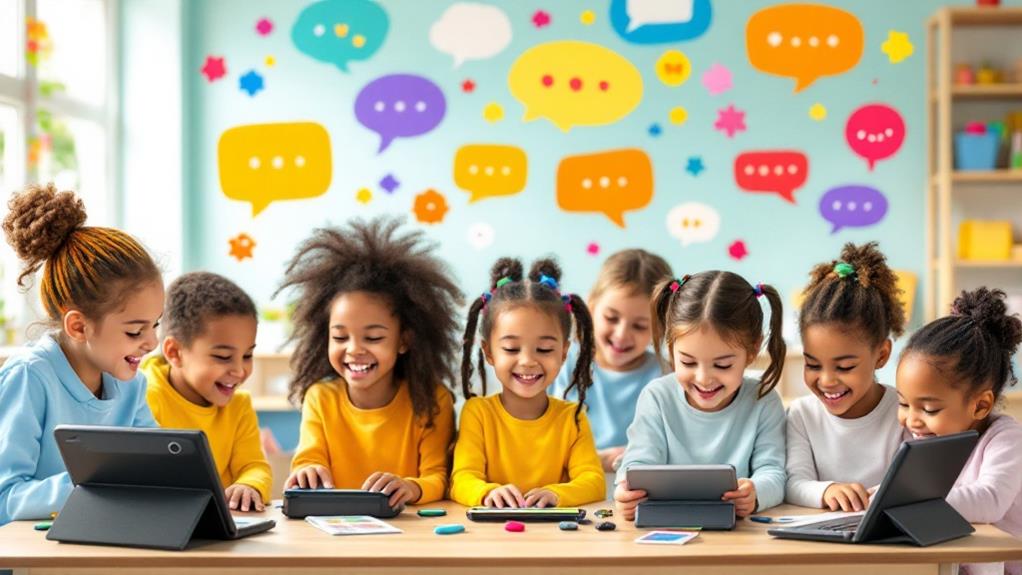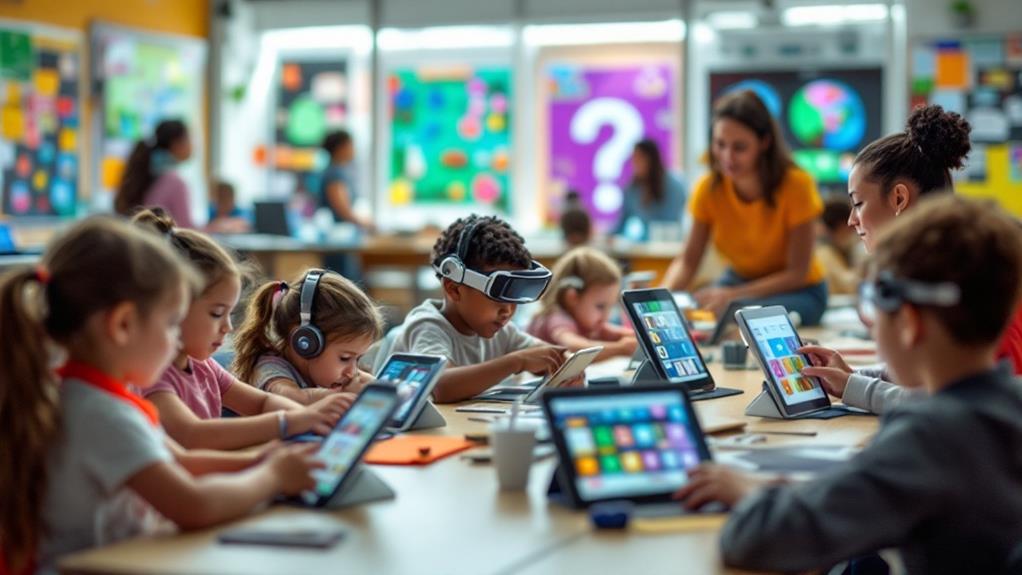AAC devices provide a crucial lifeline for children facing speech challenges, allowing them to express thoughts, feelings, and needs. These tools, ranging from simple picture boards to advanced communication apps, empower kids to engage socially and emotionally. By facilitating personal expression and creativity, AAC fosters confidence and independence in their interactions. Integrating AAC within speech therapy creates a supportive network that enhances communication skills and emotional growth. The transformative power of AAC is evident through countless success stories. Discover how these innovative tools can enrich your child's life and help them find their unique voice.
Key Takeaways
- AAC devices, ranging from picture boards to advanced speech-generating tools, empower children with speech challenges to communicate effectively.
- These tools enhance emotional and social development by enabling children to express their thoughts, needs, and feelings.
- Integrating AAC in speech therapy fosters collaboration among caregivers, teachers, and therapists, creating a supportive communication environment.
- Personalized AAC strategies cater to individual needs, promoting engagement, independence, and confidence in children's communication efforts.
- Success stories highlight the transformative impact of AAC, showcasing children's newfound ability to participate in conversations and social interactions.
Understanding AAC Devices

AAC devices, or augmentative and alternative communication devices, serve as powerful tools that can transform how children express themselves. When you think about a child's ability to communicate, you realize just how essential it's for their emotional and social development.
Imagine the joy on a child's face when they can finally share their thoughts, feelings, and needs with those around them. AAC devices empower these children, giving them a voice when traditional speech may not be possible.
Understanding AAC devices means recognizing their diverse capabilities. These tools can range from simple picture boards to sophisticated speech-generating devices.
As you explore these options, you'll find that each device is designed to cater to individual needs, allowing for personalized communication strategies.
Types of AAC Tools
When it comes to empowering children with communication challenges, understanding the variety of AAC tools available can make a significant difference. Each tool serves as a bridge, connecting your child to their world and allowing them to express their thoughts and feelings.
Here are three main types of AAC tools you should consider:
- Unaided Communication: These tools rely on the child's body, like gestures, facial expressions, and sign language. They're natural and can be an immediate way to connect.
- Low-Tech Devices: Think of communication boards or picture exchange systems. These are often made from simple materials and can be customized to reflect the child's interests, making communication accessible without technology.
- High-Tech Devices: These include speech-generating devices and apps that transform text or symbols into spoken words. They can offer a range of functions, adapting to the child's growing needs.
Benefits of AAC for Children

Many children with communication challenges experience a remarkable transformation when they gain access to AAC tools. These devices empower them to express their thoughts, needs, and emotions in ways they couldn't before. Imagine the joy of a child who can finally share their favorite story or ask for help when they need it—AAC tools make these moments possible.
With AAC, you're not just giving a child a way to communicate; you're opening doors to social interactions and relationships. They can engage with peers, participate in conversations, and build connections that foster their emotional and social development. This newfound ability enhances their self-esteem, providing them with a sense of independence and confidence.
Moreover, AAC encourages creativity and critical thinking. Children can explore language in diverse ways, developing a love for communication that lasts a lifetime.
You'll see them flourish as they learn to articulate their thoughts and feelings, bridging gaps that once felt insurmountable.
How AAC Enhances Communication
Imagine a world where a child's voice isn't silenced by their difficulties—this is the reality that AAC devices create. These tools empower children to express their thoughts, feelings, and needs, fostering connection and understanding. When you introduce AAC into a child's life, you're opening doors to meaningful interactions.
Consider the transformative impact of AAC:
- Expressing Emotions: Children can share their joys, fears, and frustrations, allowing caregivers to connect on a deeper level.
- Building Relationships: AAC devices facilitate communication with peers, helping children form friendships and develop social skills that might otherwise be challenging.
- Enhancing Learning: By articulating their thoughts, children engage more actively in learning environments, enriching their educational experiences.
Every child deserves a voice, and AAC provides the means to not just communicate, but to thrive. When you support a child in using AAC, you're not just giving them a tool; you're nurturing their confidence and independence.
Embrace this journey with them, knowing that every small step taken with AAC can lead to monumental changes in their world. Together, you can help them shine brighter than ever before.
Integrating AAC in Speech Therapy

AAC not only empowers children to communicate but also plays a significant role in speech therapy. When you integrate AAC into therapy sessions, you create a supportive environment where children feel heard and valued. This approach fosters a sense of agency, allowing them to express their thoughts, feelings, and needs, which is essential for their emotional development.
As you work with children, consider their unique strengths and preferences. Tailoring AAC tools to fit their personalities can enhance engagement and motivation. You'll notice that when they actively participate in their learning, their confidence soars.
Incorporating AAC isn't just about technology; it's about building relationships. Encourage collaboration among caregivers, teachers, and therapists. By sharing insights and strategies, you can create a holistic support network that enriches the child's communication journey.
Choosing the Right AAC Device
Choosing the right AAC device can feel overwhelming, but it's an essential step in empowering your child to communicate effectively. Each child is unique, and the best device for your child will depend on their individual needs, preferences, and abilities.
As you commence on this journey, keep these three key factors in mind:
- Communication Needs: Consider what your child wants to express. Do they need a device for basic needs, social interactions, or academic support? Understanding their communication goals will guide your choice.
- User-Friendly Design: Look for a device that your child can easily navigate. A simple interface with customizable options can boost their confidence and encourage more frequent use.
- Support and Resources: Choose a device that comes with strong support resources, such as training materials for you and your child, as well as access to professionals who can help with implementation.
Success Stories With AAC

Many families have found incredible success with AAC devices, transforming their children's ability to communicate and connect with others. Imagine the joy of a parent hearing their child express their thoughts and feelings for the first time. This is the reality for many who embrace AAC tools.
You might come across stories of children who once struggled to share their needs but now confidently engage in conversations. For instance, one little girl, once silent in her classroom, began using a speech-generating device and started sharing her opinions during group discussions. Her classmates embraced her, creating deeper friendships and fostering an inclusive environment.
Every success story reaffirms that AAC isn't just about words; it's crucial to empowerment. Parents often share how AAC devices have opened doors, allowing their children to participate in family gatherings, school activities, and social events.
Each child's journey with AAC is unique, filled with milestones that inspire hope. It's important to remember that every small victory contributes to a greater sense of belonging and self-expression.
With patience, support, and the right tools, your child can find their voice and connect with the world in meaningful ways.
Overcoming Barriers to AAC Use
While success stories highlight the transformative power of AAC devices, some barriers can still make the journey challenging for families. Acknowledging these obstacles is the first step toward overcoming them.
You can foster a supportive environment by addressing common concerns:
- Limited Awareness: Many families mightn't know about AAC options. Sharing resources and information can help bridge this gap, empowering others to explore the possibilities.
- Cost and Funding: AAC devices can be expensive, and maneuvering through insurance can be intimidating. Explore community resources, grants, and local organizations dedicated to supporting families in need, ensuring no child is left without a voice.
- Resistance to Change: Some caregivers may feel hesitant about incorporating AAC into daily life. Encourage open conversations, highlighting the potential for connection and communication.
Small steps can lead to meaningful progress.
Future of AAC Technology

Envisioning the future of AAC technology reveals a landscape rich with potential and innovation that can further empower children with communication challenges. As you explore this evolving field, you'll notice trends that emphasize personalization and accessibility.
Imagine devices that adapt in real-time to a child's developmental needs, reflecting their unique voices and personalities. The integration of artificial intelligence is making AAC tools smarter, allowing for more intuitive interaction.
Picture a device that learns from your child's preferences and adjusts its responses accordingly, fostering deeper connections and understanding. You can be part of this transformative journey, ensuring children not only communicate but express themselves fully.
Moreover, the expansion of mobile technology means AAC devices will likely become more portable and user-friendly, breaking down barriers and allowing children to communicate in any environment.
This evolution is a demonstration of our commitment to inclusivity, giving every child the opportunity to share their thoughts, feelings, and ideas. As you look ahead, remember that each advancement in AAC technology is a step towards a future where every child has a voice—a future where communication challenges are met with courage, creativity, and compassion.
Resources for AAC Implementation
As advancements in AAC technology open up new possibilities, understanding the resources available for effective implementation becomes vital.
You're not alone in this journey; many tools can support you in giving children the voice they deserve.
Here are three essential resources to keep in mind:
- Training Workshops: Attend workshops that offer hands-on experience and expert guidance. These sessions can empower you with strategies to engage children effectively.
- Online Communities: Join forums and social media groups focused on AAC. Sharing experiences and challenges with others can provide valuable insights and encouragement.
- AAC Apps: Explore various AAC applications that cater to different needs. These user-friendly tools can be customized, making them accessible and engaging for children.
Conclusion
In the journey of communication, AAC devices aren't just tools; they're bridges to connection. By embracing these technologies, you're not only giving children a voice but also empowering them to express their unique thoughts and feelings. While challenges may arise, remember that every small step forward is a victory worth celebrating. As AAC continues to evolve, it holds the promise of opening even more doors for your child's expression and interaction in a world that's enthusiastic to hear them.
